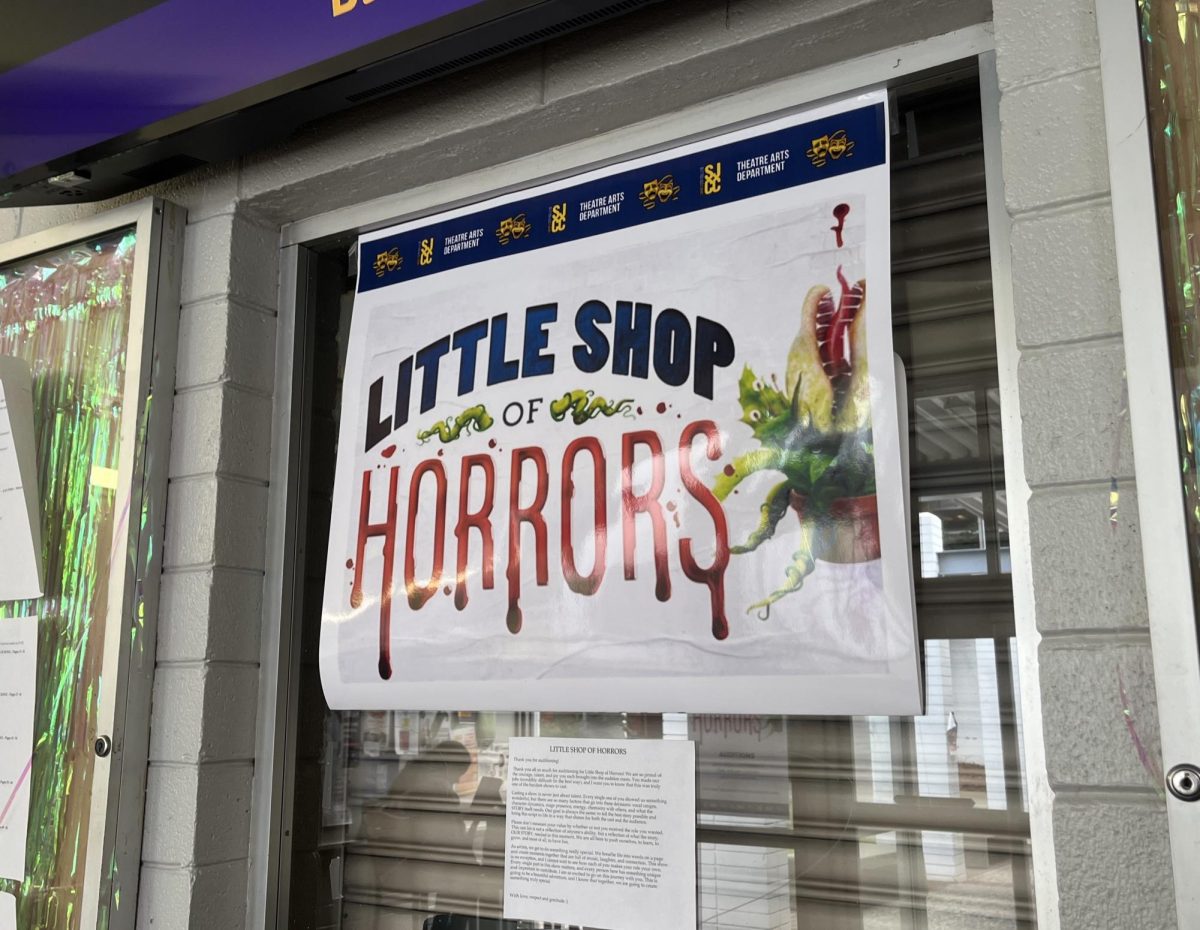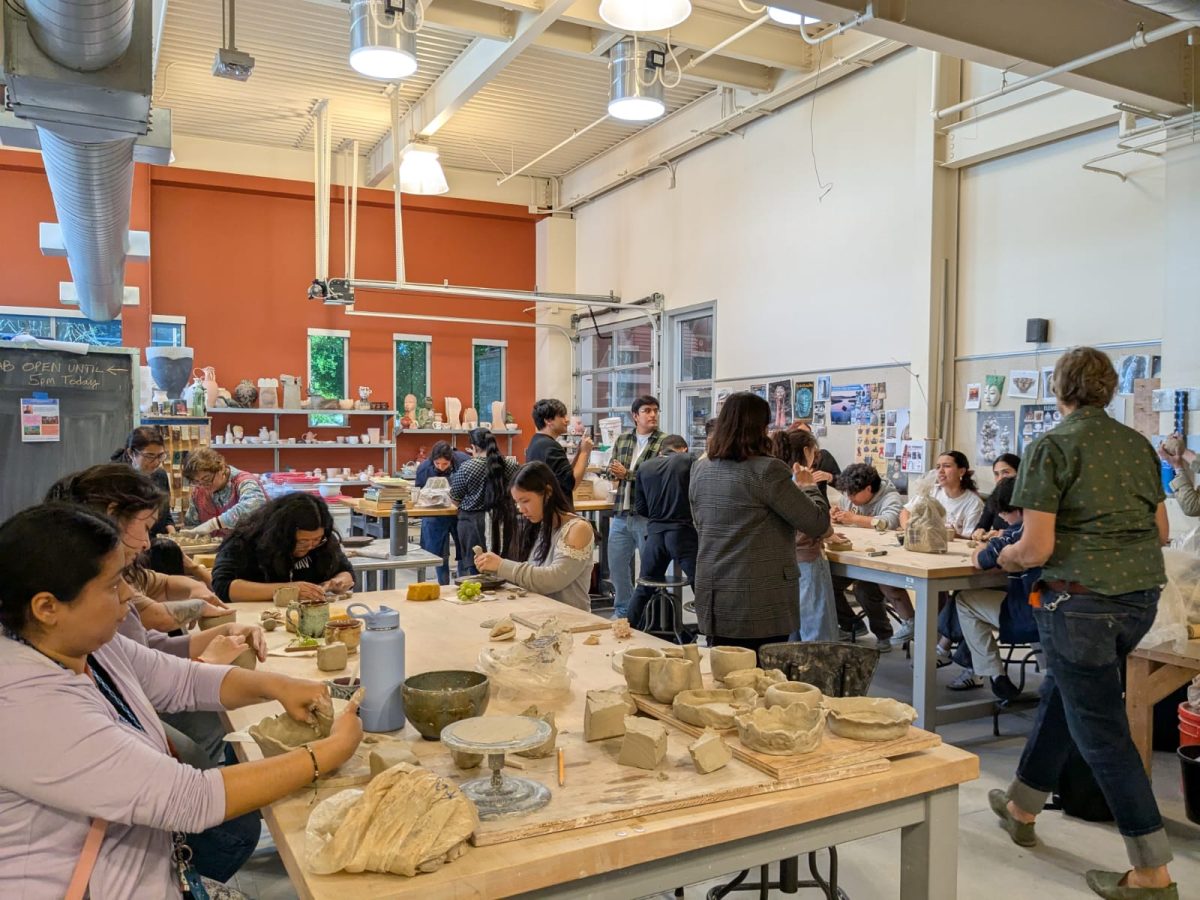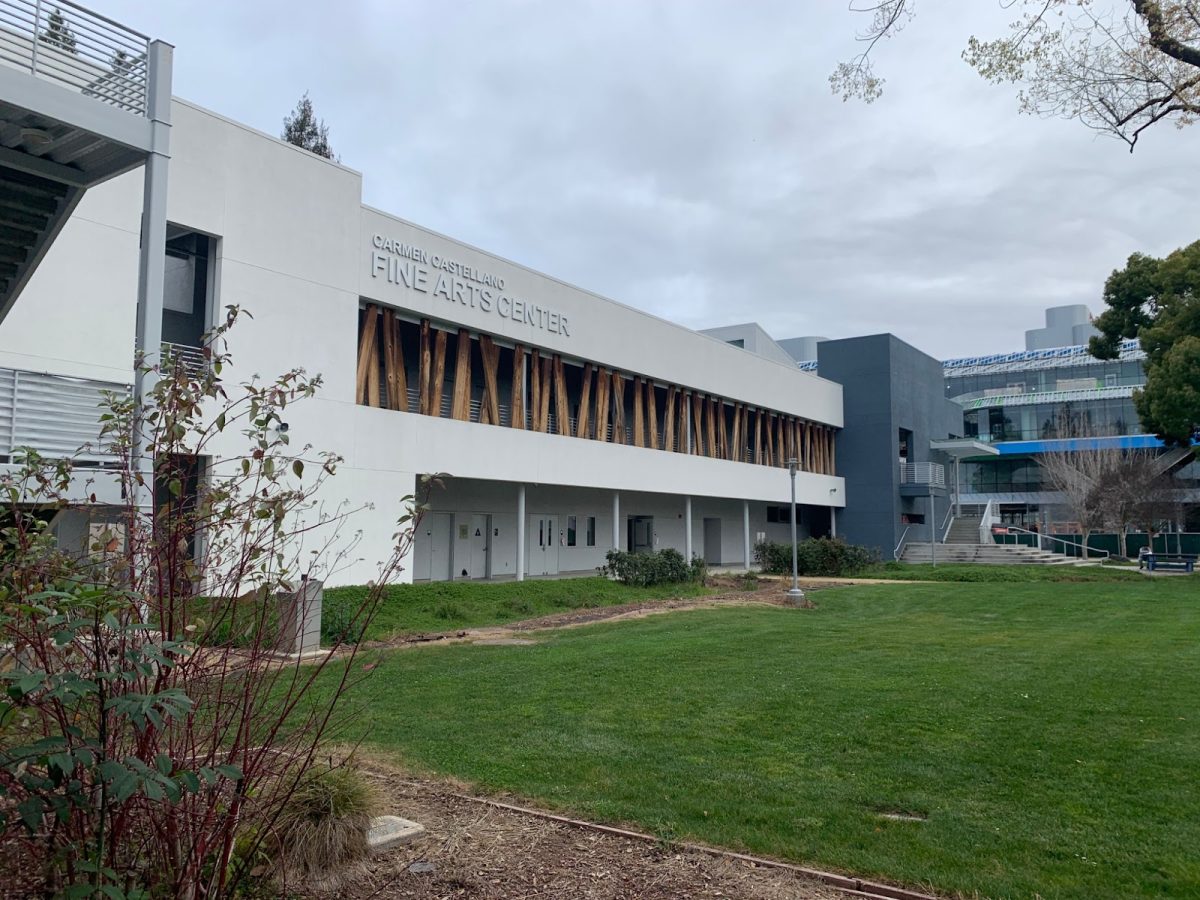From far away they seem like typical paintings of oceans and cliffs, but as you get closer, colors, textures and techniques
emerge from Sandra Smith-Dugan’s exhibit titled “What I See.”
“The less blended paintings look realistic and the more blended paintings look dreamy,” said Norma Johnson, 25, fine arts major.
Smith-Dugan, who enjoys nature and works at NASA, said she picked the title “What I See” because what she sees inspires her to paint. Many of her paintings are landscapes of Santa Cruz and Pacifica.
The reception was held Saturday, Feb. 21 at the Carmen Castellano Fine Arts Gallery.
The featured artist talked about skills she learned and uses in her paintings, as well as the process of getting art displayed and being a professional artist.
She also talked to art professor Eve Mathias’ beginning painting class on Wednesday, Feb. 19.
Smith-Dugan told the class that she uses a palette knife to bring out texture and add a 3-D effect to the rocks and cliffs in her paintings. She said adding specks of blues and greens to rocks oddly makes them more realistic than just using brown and gray.
“The way Sandra lays colors makes her paintings more stimulating to look at,” Mathias said.
The expert also discussed framing, which is when an artist determines the borders of their landscape before painting onto a canvas.
“Composition is key to having a successful painting,” Mathias said.
In painting, composition refers to the placement of objects, which includes determining the borders, size and scale.
There were a few figurative drawings of people made with charcoal on paper or canvas. When working with charcoal against a white background, the artist said she appreciates the smudges and is against cleaning up a picture to get the contrast.
“In figurative work, I’m more interested in capturing the psyche or emotion of the object,” Smith- Dugan said.
She went through the steps it takes to become a professional saying, “it takes a lot of motivation and support.”
Many careers involve more than just getting a degree, students need real life experience and business advice.
“You have to understand business and do your own promoting,” Smith-Dugan said.
For artists looking to take the next step in their career, Mathias recommends Art 76, Professional Practices and Portfolio Development.
Smith-Dugan said “it takes 10,000 hours of practice to master something,” so students should not feel discouraged. When people start buying their art it will be rewarding and validating.
The reception was not as enlightening as her lecture to Mathias’ art class, but free food was offered and Smith-Dugan was focused on selling art.






